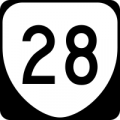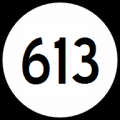(Initial page creation from preload) |
(coped from https://wiki.waze.com/wiki/Virginia#Road_type_guidance) |
||
| Line 1: | Line 1: | ||
<!-- This page is only transcluded into (displayed on) the main page for this state. See more detailed instructions below. --><noinclude>{{:USA/CommonState/ReturnPurge|{{SubPage2}}}}<br/></noinclude><!-- | <!-- This page is only transcluded into (displayed on) the main page for this state. See more detailed instructions below. --><noinclude>{{:USA/CommonState/ReturnPurge|{{SubPage2}}}}<br/></noinclude><!-- | ||
------ DO NOT MODIFY ABOVE THIS LINE -------- DO NOT MODIFY ABOVE THIS LINE ------> | ------ DO NOT MODIFY ABOVE THIS LINE -------- DO NOT MODIFY ABOVE THIS LINE ------> | ||
:''For further information, see [[Road names/USA]], [[Road types/USA]] and [[Virginia/Mapping resources]].'' | |||
In Virginia, outside cities and major towns (and a couple of urban counties), nearly every road and street is designated as a "state highway" and assigned a number for VDOT inventory purposes. However, for Waze routing, we only treat '''primary''' state highways as "numbered state highways" for purposes of applying the [[Road types/USA|road type guidelines]]. Highways marked with '''primary''' route numbers must be designated as at least "Minor Highway" in Waze, unless the road's functional classification requires a higher designation. For Virginia secondary highways, rely on the road's functional classification only. | |||
Primary state highways have numbers in the range of 2 to 599 (and, as an exception, 895), displayed in a route marker using a shield design. All other numbers from 600 up are secondary highways; if these roads have route markers (many do not), they use a circle design instead of a shield. See [http://www.virginiadot.org/info/resources/route-index-07012003.pdf|Virginadot route index resources] for more info. | |||
<gallery> | |||
File:Virginia 28.png|Primary route marker | |||
File:VA_613.PNG|Secondary route marker | |||
</gallery> | |||
==== Locking standard ==== | ==== Locking standard ==== | ||
This is the locking standard that has been adopted in the Northeast USA. | This is the locking standard that has been adopted in the Northeast USA. | ||
Revision as of 11:31, 29 October 2014
- For further information, see Road names/USA, Road types/USA and Virginia/Mapping resources.
In Virginia, outside cities and major towns (and a couple of urban counties), nearly every road and street is designated as a "state highway" and assigned a number for VDOT inventory purposes. However, for Waze routing, we only treat primary state highways as "numbered state highways" for purposes of applying the road type guidelines. Highways marked with primary route numbers must be designated as at least "Minor Highway" in Waze, unless the road's functional classification requires a higher designation. For Virginia secondary highways, rely on the road's functional classification only.
Primary state highways have numbers in the range of 2 to 599 (and, as an exception, 895), displayed in a route marker using a shield design. All other numbers from 600 up are secondary highways; if these roads have route markers (many do not), they use a circle design instead of a shield. See route index resources for more info.
-
Primary route marker
-
Secondary route marker
Locking standard
This is the locking standard that has been adopted in the Northeast USA.
In Virginia we have a set minimum standard for locking roads based on segment type. Any road of a certain segment type must be locked at least to the rank (level) in the chart below. Roads may be locked higher for protection and special situations (areas with construction, tricky design, frequent mistakes, imaging inaccuracies, and the like), but should not be locked lower.
A great time to implement these locks is while bringing the road types of an area into compliance with the current US road type standards (FC and highway systems). Lock the roads based on type after they've been set to current US road type standards.
| Segment Type | Statewide |
|---|---|
| Freeway | 5 |
| Ramp | Highest rank of connected segments |
| Major Highway | 3 |
| Minor Highway | 3 |
| Primary Street | 1 (Auto) |
| Street | 1 (Auto) |
| Private Road | 1 (Auto) |
| • • • • Ferry • • • • | 5 |
| |-|-|-|-|-|-|-|-|-| Railroad |-|-|-|-|-|-|-|-|-| | 2 |
Note: Do Not Mass Edit just to update locks to these standards, these can be adjusted as you find them while editing other aspects of the segments such as FC, speed limits, naming, etc.
Some segments still warrant higher locks and care should be taken when setting segment lock to these standards to look for and protect these special setups with higher locks. Some examples; segments which are part of BDP, U-turn prevention, or using micro-doglegs, or other complex intersection setups.
See Virginia/Major roads for guidance in Virginia that may not be universal to all other states and territories.
If a different locking standard for the midatlantic region is desired, please develop it at USA/Mid Atlantic/Locking standard. If state-specific guidance for Virginia is desired, please develop it at Virginia/Locking standard.

